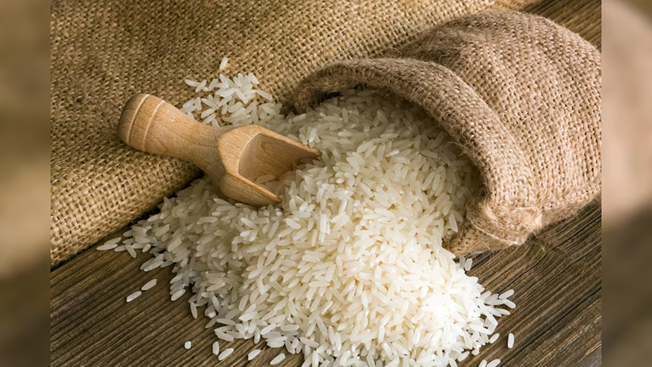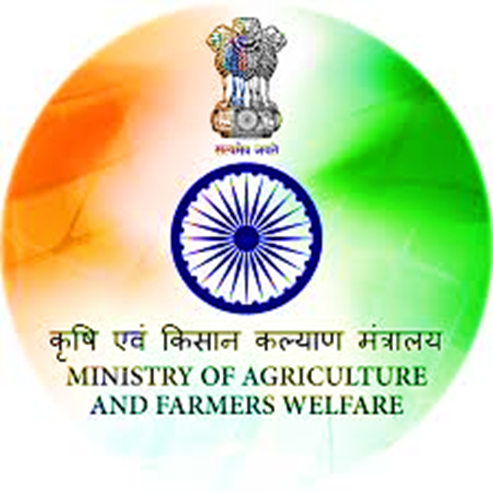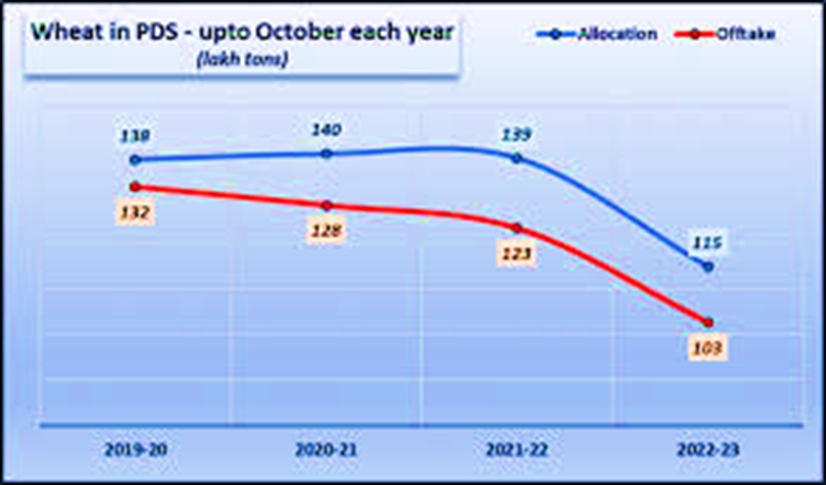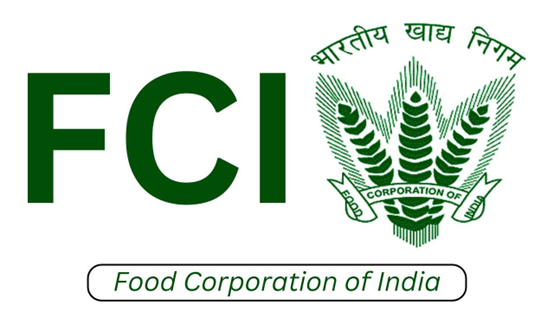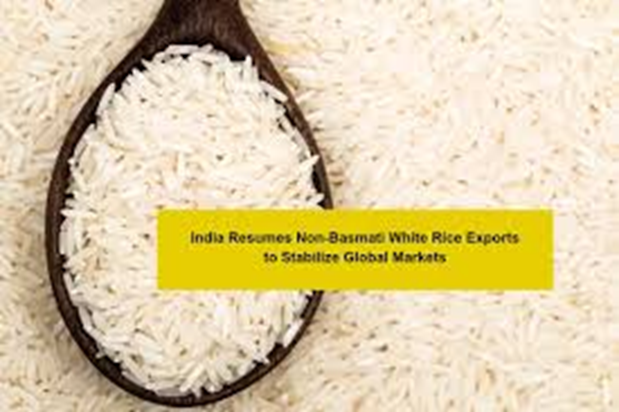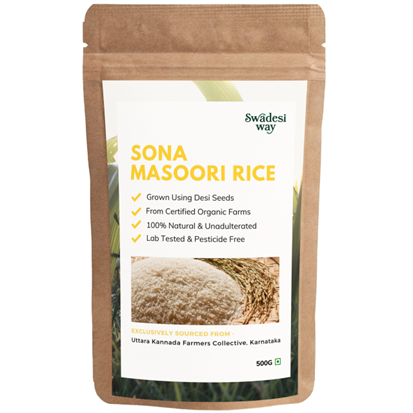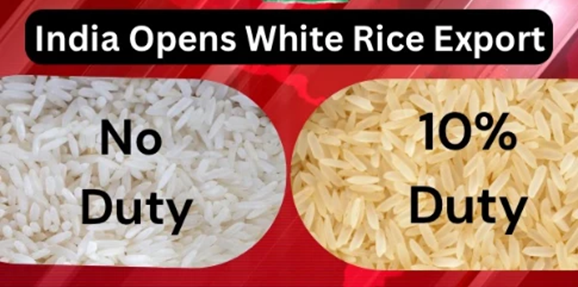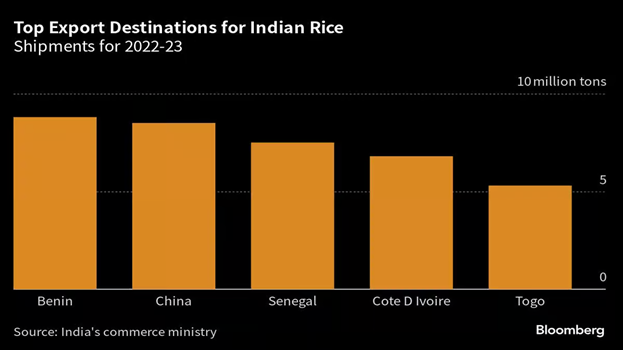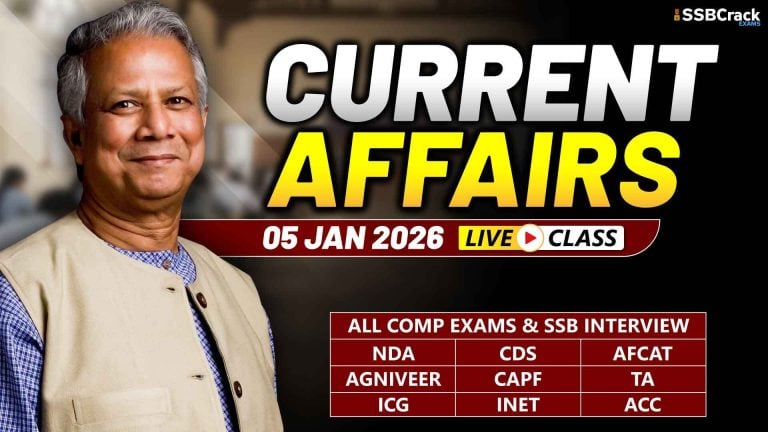Centre lifted the ban on export of Non-Basmati White Rice. It has, however, imposed a minimum export price (MEP) of $490 per tonne. A day before, the government had removed the 20% export duty on Non-Basmati White rice, and halved export duty on three other categories of rice. The duty on ‘rice in the husk (paddy or rough)’, ‘husked (brown) rice’, and ‘parboiled rice’ was reduced from 20 per cent to 10 per cent.
Export Ban On Non-Basmati White Rice Lifted
Why In News
- Centre lifted the ban on export of Non-Basmati White Rice. It has, however, imposed a minimum export price (MEP) of $490 per tonne. A day before, the government had removed the 20% export duty on Non-Basmati White rice, and halved export duty on three other categories of rice. The duty on ‘rice in the husk (paddy or rough)’, ‘husked (brown) rice’, and ‘parboiled rice’ was reduced from 20 per cent to 10 per cent.
Why The Decision Now
- The export ban had come amid a marginal dip in rice production and the looming threat of an erratic monsoon last year. This year, sowing of paddy during the ongoing kharif season has been higher, the crop is normal, and a bumper output is expected. Wholesale prices are down, while the Central pool is well-stocked.
Factors Behind This Are:
- Higher Sowing: Though paddy is grown in all three seasons in India, most of it is planted in kharif. With a good monsoon, farmers have planted more paddy than last year. As per the agriculture ministry, the area under paddy was reported at 413.50 lakh hectare as on September 20 this year, 2.2 per cent higher than last year (404.50 lakh hectares) and 3 per cent higher than the normal area (401.55 lakh hectares during five years from 2018-19 to 2022-23). The increase has been reported from Uttar Pradesh, Madhya Pradesh, West Bengal, Haryana, Jharkhand, Bihar and Chhattisgarh.
- Record Production: The agriculture ministry said on September 25 that India’s total rice production (kharif, rabi and summer) is estimated to reach 137.82 million tonnes during 2023-24, 1.5 per cent higher than last year. This is due to a higher output during the kharif season, which increased to 113.26 million tonnes from 110.51 million tonnes during 2022-23.
- Declining wholesale prices, stable retail inflation: Data on the Centre’s UPAg portal show that the wholesale price of rice was recorded at Rs 3,324.99 per quintal on September 27, lower than Rs 3,597.09 per quintal a week ago, and Rs 3,502.91 per quintal a month ago. The Consumer Price Index-based retail inflation of rice has been hovering in double digits for the past two years. It started rising from June 2022 and reached its peak in July 2023 (13.09 per cent), when the government banned exports. It remained in double digits for 18 months, before coming down to 9.52 per cent in August.
- Surplus Stocks: Food Corporation of India data show that rice stock in the Central pool was 323.11 lakh tonnes on September 1. Along with unmilled paddy, the rice stock would be 423 lakh tonnes, much higher than the buffer stock norms. The Centre is required to maintain a stock of 135.40 LMT of rice as on the first day of July and 102.50 lakh tonnes on the first day of October.
Who Will Be Impacted By The Move
- Along with easing export restrictions, the Centre has also allowed state governments to buy rice for their welfare schemes, and distilleries for ethanol making.
- Before its export was banned, Non-Basmati White rice constituted about 25 per cent of the total rice exported from the country. The lifting of the ban will help traders, who, if they were at all exporting, were paying a 20% duty. It will boost export sentiment and may benefit farmers who grow non-Basmati premium varieties like Sona Masoori (mainly grown in Karnataka, Andhra Pradesh and Telangana), which was hit by the ban.
- For domestic consumers, retail prices, which are already elevated, may further go up.
What Is India’s Status As A Rice Exporter?
- India is the second largest producer and the biggest exporter of rice. India, along with China, accounts for over half of the world’s rice production. China, however, is also the biggest consumer of rice, leaving little for exports.
- According to the United States Department of Agriculture (USDA), India accounted for 33 per cent (17 million tonnes) of the world’s total rice exports (53 million tonnes) during the calendar year 2023. In 2022, before the ban on Non-Basmati White Rice shipments, India accounted for about 40 per cent of the total rice exports (56 million tonnes) in the world.
Who Are India’s Competitors?
- Two east Asian countries—Thailand and Vietnam—are the two main competitors of India in the global rice market. In 2023, the combined rice export of these two countries was almost equal to Indian exports. Besides, Pakistan, Cambodia and the United States are also in the list of rice exporters.
- Philippines, Indonesia, Vietnam, China, European Union, Nigeria, Iraq, Saudi Arabia and Malaysia are the top rice importers.
